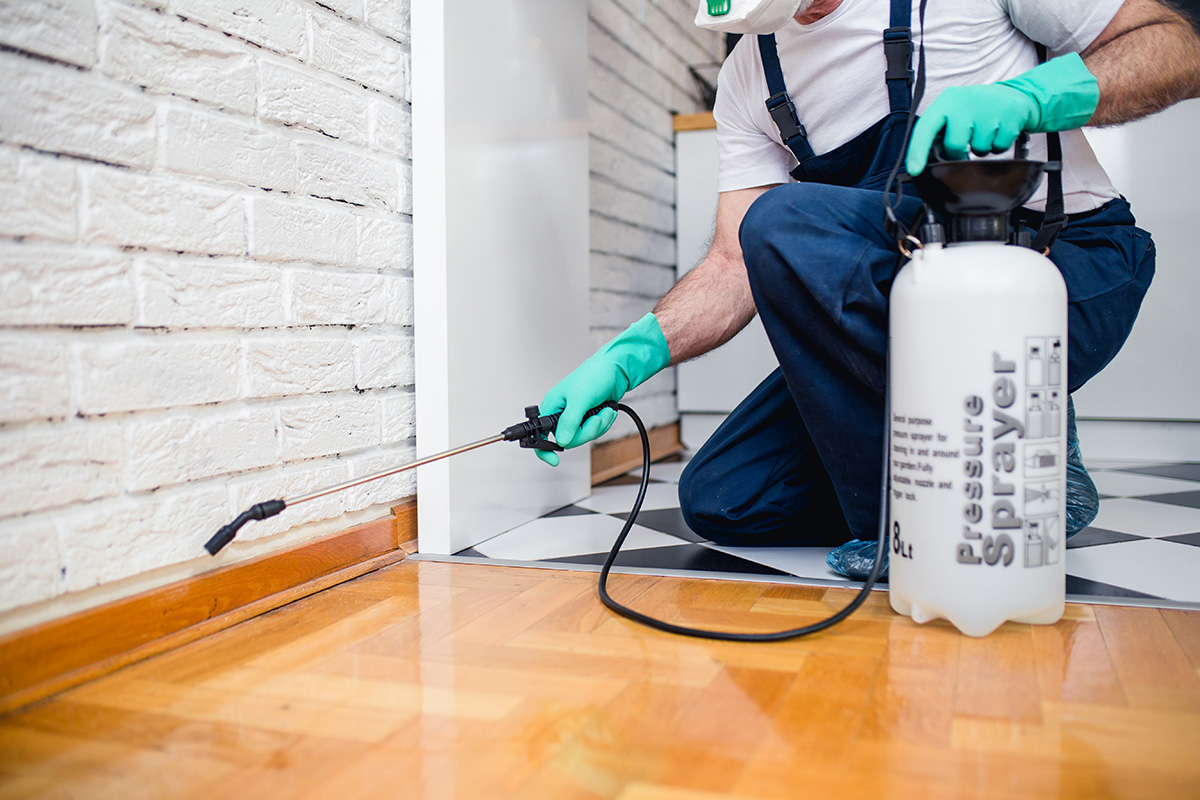Bed Pest Therapy Break Down: Contrasting Chemical Vs. Non-Chemical Solutions
In the realm of bug control, particularly when dealing with the consistent issue of bed insects, the selection in between chemical and non-chemical therapy services can be a critical one. Both methods use unique benefits and disadvantages, influencing variables such as performance, safety and security considerations, and total cost. By checking out the nuanced details of each approach, a clearer understanding of which path to pursue in resolving a bed pest infestation can be achieved.
Effectiveness of Chemical Therapies
Chemical therapies for bed pest problems have actually been commonly identified for their potent and fast efficacy in eliminating these insects. When taking into consideration the performance of chemical therapies, it is essential to comprehend that they can offer a extensive and quick service to a bed bug problem. Professional pest control men commonly depend on pesticides to target bed pests at various stages of their life cycle, consisting of eggs, fairies, and adults. These chemicals typically work by interrupting the bed bugs' nervous system, resulting in paralysis and eventual fatality.
Furthermore, chemical treatments have the benefit of using residual results, suggesting that they can proceed to get rid of bed pests even after the first application. This recurring action is particularly valuable in combating any type of potential re-infestations. In addition, the fast activity of chemical treatments can bring alleviation to people encountering serious bed pest infestations, permitting them to restore control of their space rapidly.
Safety And Security Worry About Chemical Solutions
One important aspect that calls for cautious consideration when using chemical solutions for bed pest treatment is making sure the safety of occupants and the setting. Exposure to particular chemicals used in bed pest therapies can lead to respiratory concerns, skin inflammation, or other damaging reactions, specifically in people with pre-existing problems or sensitivities.
In addition, the environmental influence of chemical options is one more substantial consideration. Some chemicals used in bed insect treatments might be hazardous to beneficial pests, wildlife, and ecological communities if they leach right into the dirt or water systems. It is necessary to utilize chemical therapies sensibly, adhering to safety standards, and thinking about much less poisonous alternatives to reduce these threats and ensure the risk-free and reliable management of bed bug invasions.
Advantages of Non-Chemical Strategies
Taking into consideration the possible safety issues and environmental effect related to chemical solutions for bed bug treatment, exploring non-chemical strategies offers an encouraging alternative with several distinctive benefits. Non-chemical techniques supply a more secure option for households, particularly those with individuals, kids, or pet dogs sensitive to extreme chemicals. These strategies remove the dangers of exposure to toxic substances, reducing the potential for damaging wellness impacts. Moreover, non-chemical treatments are eco-friendly, as they do not add to air or water pollution, making them a lasting selection for insect control.
Furthermore, non-chemical remedies can be reliable in targeting bed insects, including hard-to-reach areas where chemical therapies may not permeate - A1 pest control charlotte nc bed bugs. Methods such as warm therapy, vacuuming, vapor cleaning, and mattress encasements give extensive obliteration without the usage of harmful chemicals.
Limitations of Non-Chemical Treatments

Additionally, non-chemical therapies often need numerous applications to accomplish effective eradication. This can be lengthy and might not constantly ensure total removal of all bed bugs and their eggs, specifically in hard-to-reach or surprise areas.
Furthermore, the success of non-chemical treatments heavily counts on appropriate application and thoroughness, which can be testing for people without professional know-how. Inadequate application of non-chemical techniques may lead to insufficient eradication, causing relentless infestations and the need for additional treatments.
As a result, while non-chemical therapies have their advantages, it is necessary to acknowledge these constraints and consider them when determining one of the most reliable technique for managing bed pest infestations.
Cost Comparison: Chemical Vs. Non-Chemical Options
Provided the restrictions connected with non-chemical treatments, an essential aspect to evaluate in the context of bed bug monitoring is the expense contrast in between chemical and non-chemical choices. Chemical therapies normally entail the application of pesticides by experts, which can range from $250 to $900 per room, depending upon the intensity of the invasion and the size of the location to be treated. On the other hand, non-chemical treatments like heat therapy or heavy steam can be much more expensive, with costs varying from $1,000 to $6,000 for an entire home. While the first expense of chemical treatments may appear reduced, multiple treatments may be called for to completely eliminate the infestation, possibly increasing the total expense. On the other hand, non-chemical options might offer an extra sustainable and green service, although they can be cost-prohibitive for some individuals. Eventually, when taking into consideration the cost of bed pest therapy choices, it is essential to evaluate the upfront expenditures versus the efficiency and lasting sustainability of the selected approach.
Verdict

Taking into consideration the prospective safety problems and environmental impact connected with chemical remedies for bed bug therapy, exploring non-chemical techniques offers an appealing choice with numerous unique benefits.Offered the constraints associated with non-chemical treatments, an important aspect to examine in the context of bed pest management is the price comparison between chemical and non-chemical choices. In comparison, non-chemical therapies like warmth therapy or steam can be a lot more pricey, with prices ranging from $1,000 to $6,000 for an entire home. While the initial cost of chemical treatments may seem reduced, several therapies might be called for to completely eradicate the problem, possibly enhancing the total expense.In final thought, when contrasting chemical and non-chemical bed insect treatment alternatives, it is important to think about efficiency, safety, advantages, constraints, and expense.
Comments on “Reputable A1 Bed Bug Exterminator Charlotte - Get Rid of Bed Bugs Quick”